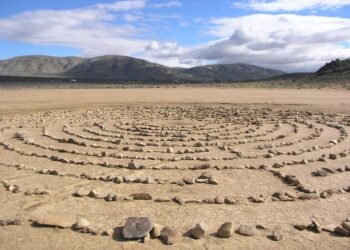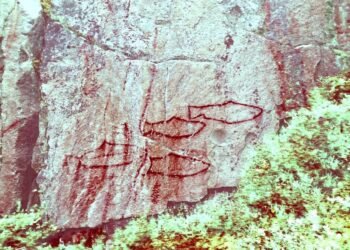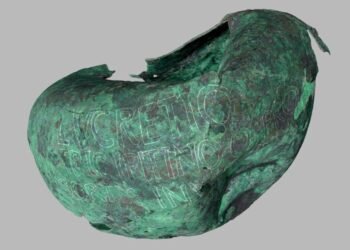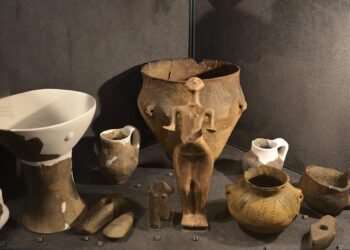In the Late Viking Age, a grave was built that looks very similar to one of the most spectacular graves of the Roman Age in Norway.
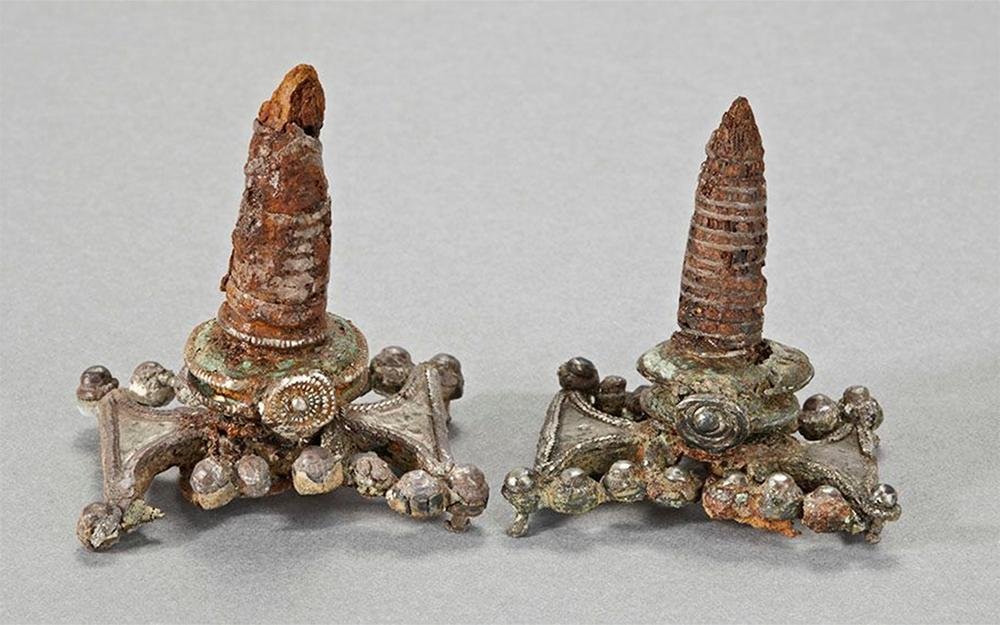
The Hunn burial site in Østfold is a rich cultural landscape with over 145 visible burial mounds covering a span of almost two thousand years from the Late Bronze Age, 1100 BCE, to the end of the Viking Age, 1050 CE.
The area consists of three sites. The Western Site contains graves dating back to Roman times, the Migration Period, the Iron Age and the Viking Age. On this site researchers have found detailed similarities between two graves that were built hundreds of years apart. The oldest grave of the two dates back to Roman times and has been named Stubhøj, while the grave which is similar to Stubhøj is from the Viking Age and is called Store Vikingegrav (the Large Viking Grave).
Distinguishing between the near and the distant past
Julie Lund is an Associate Professor at the Department of Archaeology, Conservation and History at the University of Oslo. Under a project entitled “Using the Past in the Past. Viking Age Scandinavia as a Renaissance?” she has been investigating how the Vikings made connections with the past in various graves and deposits of artifacts.
Through her research, she has discovered that different groups in the Viking Age make reference to different pasts.
“The Vikings made use of the past in a more subtle way than previously believed. For example, they distinguished between a near and a distant past. This can be seen in female graves where heirlooms such as jewelry have been laid down, while in other graves, such as Store Vikingegrav, items have been included that copy objects dating back to the Roman period 700 years earlier,” says Lund.
“Distinguishing between near and distant pasts is probably not something that we regard as being particularly special. However, what we can see is that they made connections with a specific part of the past at a time when they did not have much of an idea about the past,” she emphasizes.
There are not many Viking graves that copy graves from the Roman era. Researchers are only aware of two other burial sites in Norway which are similar to the graves found at Hunn. Professor Lund thought that the similarities between the Roman and Viking graves at Hunn were worthy of further investigation.
“Hunn is a special burial site because all periods of prehistory are represented there. It is a place that has been in continuous use for thousands of years. There are many layers of history there, but the Vikings chose to copy one particular grave, namely the most spectacular Roman-era grave in the landscape. This is no coincidence and it indicates that the Roman Age was a particular past they wished to make connections with,” says Lund.
The Viking grave was supposed to look old
She looked at all the similarities between the two graves, both externally and internally.
“Externally, a common feature of the graves is that they were both built on the best parts of the site. The Roman grave was built on top of a ridge, while the Viking grave was built on a slope on the same ridge,” she explains.
Furthermore, both graves are marked by even-sized stones encircling the graves, so-called kerbstones.
These kerbstones piqued the archaeologist’s curiosity.
They actually date back to the Neolithic Age and were also used in graves during the Bronze Age. However, at that time the kerbstones were incorporated in the burial mound and were part of the structure. They were thus not visible during the Bronze Age, but gradually became visible as the mounds started to wear down. In this way, burial mounds with kerbstones acquired an old look, and that was also what they were trying to achieve with the Viking grave, Julie Lund thinks. It was supposed to give the grave an old look.
“What is interesting about Store Vikingegrav is that it was built as a replica. It was supposed to look like it had been there throughout the ages,” she says.
Verbal accounts which lived on
The Vikings also copied the inside of the Roman Age grave. Both graves have a full range of weapons, shields, rare drinking horns and riding spurs.
Another common feature is that they are both skeleton graves with furnished burial chambers.
“Stubhøj is the first inhumation grave that we know of today. Between the Bronze Age and the date of this Roman Age grave they used to burn their dead. So this is a departure from a thousand-year-old tradition of cremation,” says Lund.
The interior similarity of the graves has left the researchers wondering, because the Roman grave was not opened until the early 1900s. In other words, nine hundred years after the Vikings copied it.
“We cannot say that the Vikings copied something they had seen. It is more likely that they copied something that they had heard stories about. Stubhøj’s break with a thousand-year-old cremation tradition means that it must have been very significant when it was built. It is therefore not unlikely that stories were told about the funeral rites, about the person buried or about the relationships that were created through the alliance gifts in the grave,” says the archaeologist.
Social relationships, self-image and identity
When investigating Store Vikingegrav, the researcher has focused on the impact of material culture on people.
“When you use elements from the past, you make it exist or relevant in the present. This is how material culture affects people and vice versa. Using the past and copying a Roman-era grave indicates that they were not just trying to create something that looked old. The past also provided them with a narrative about who they were. Consequently the Vikings’ use of the past concerned social relationships, self-awareness and identity,” she explains.
Heirlooms, such as jewelry found in female graves, were reserved for a certain type of female elite and manifested close relationships, while in other graves, such as ship settings where the stones around the grave form the shape of a ship, relationships are created with distant times and places.
“In Store Vikingegrav, alliances from a distant Roman era are re-forged in the Viking Age. Their interpretation of the Roman grave reveals what they liked and it tells us something about who they perceived themselves to be and wanted to be,” says Lund.
The research was published in Archaeological Dialogues and builds upon previous work in the Cambridge Archaeological Journal. — by University of Oslo
More information: Julie Lund et al, Reassessing power in the archaeological discourse. How collective, cooperative and affective perspectives may impact our understanding of social relations and organization in prehistory, Archaeological Dialogues (2022). DOI: 10.1017/S1380203822000162
Julie Lund, Kerbing Relations through Time: Reuse, Connectivity and Folded Time in the Viking Age, Cambridge Archaeological Journal (2021). DOI: 10.1017/S0959774321000445




